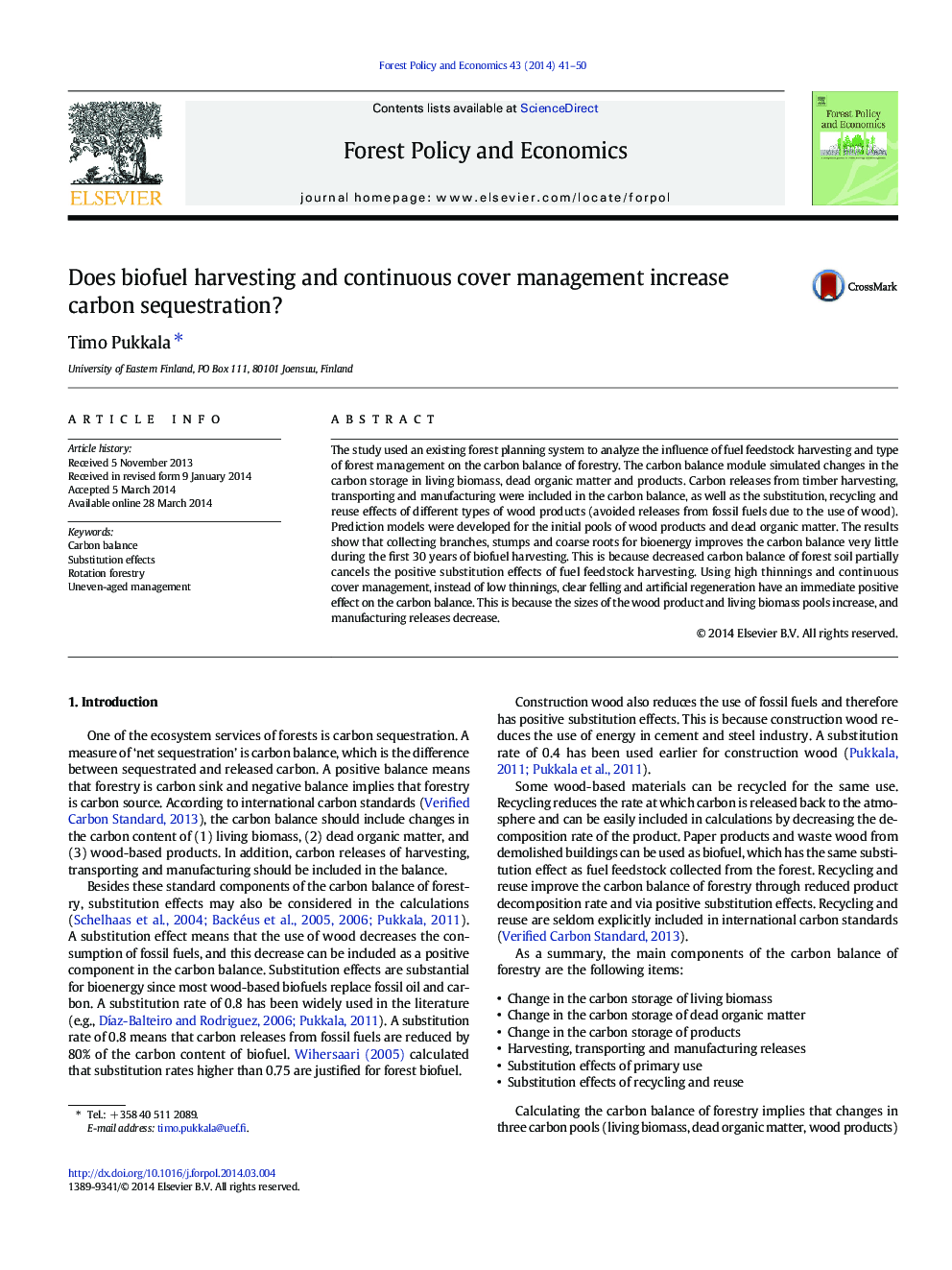| کد مقاله | کد نشریه | سال انتشار | مقاله انگلیسی | نسخه تمام متن |
|---|---|---|---|---|
| 91909 | 159864 | 2014 | 10 صفحه PDF | دانلود رایگان |
• Carbon module was integrated in a forest management planning system.
• Initialization models were developed for soil carbon and wood product carbon pools.
• Carbon balance calculations were done for five forests under five management scenarios.
• Fuel feedstock harvesting in clear-felling improved carbon balance only little since it decreased the soil carbon storage.
• Continuous cover forestry and high thinnings improved the carbon balance of forestry.
The study used an existing forest planning system to analyze the influence of fuel feedstock harvesting and type of forest management on the carbon balance of forestry. The carbon balance module simulated changes in the carbon storage in living biomass, dead organic matter and products. Carbon releases from timber harvesting, transporting and manufacturing were included in the carbon balance, as well as the substitution, recycling and reuse effects of different types of wood products (avoided releases from fossil fuels due to the use of wood). Prediction models were developed for the initial pools of wood products and dead organic matter. The results show that collecting branches, stumps and coarse roots for bioenergy improves the carbon balance very little during the first 30 years of biofuel harvesting. This is because decreased carbon balance of forest soil partially cancels the positive substitution effects of fuel feedstock harvesting. Using high thinnings and continuous cover management, instead of low thinnings, clear felling and artificial regeneration have an immediate positive effect on the carbon balance. This is because the sizes of the wood product and living biomass pools increase, and manufacturing releases decrease.
Journal: Forest Policy and Economics - Volume 43, June 2014, Pages 41–50
